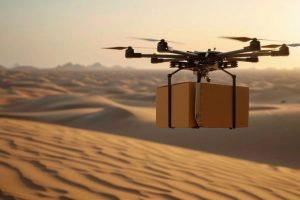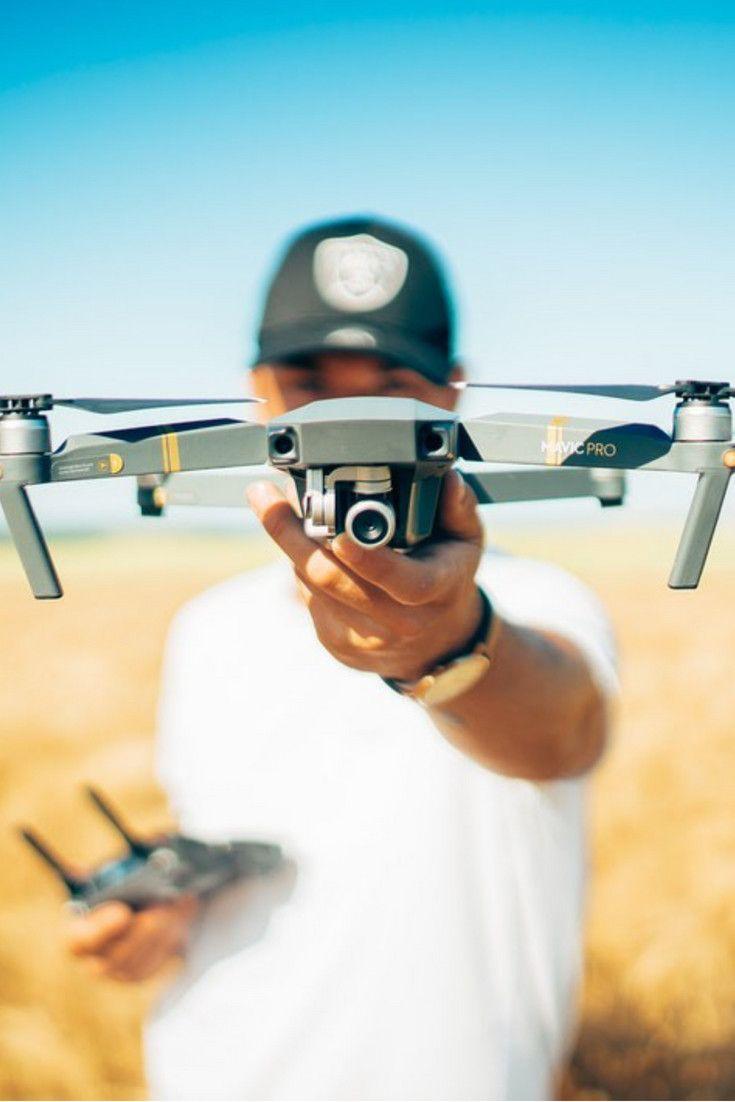A light hum outside the front door and a drone is delivering the birthday present that was ordered too late – that’s probably how many people imagine drones in logistics. The present looks different, but drones are already providing valuable services to logistics companies today. We present the status quo of drone technology in logistics and look to the future.
The Essentials in Brief
In transport and warehouse logistics, the use of drones for various purposes is being studied, tested or, depending on the application, already implemented. Drones can be useful for logistics in these three areas
- Last mile delivery and short to medium distance transportation: the most obvious option – but public airspace is usually highly regulated.
- Inventory management and order picking: Both are time-consuming and labor-intensive in the warehouse. Combined with scanning technology, drones are much faster.
Surveillance and inspection: Logistics centers are often large and their outdoor areas are not easy to oversee. Surveillance drones keep an eye on everything.
Opportunities and Challenges of Drone Logistics
This brief overview of the current use of drones in logistics makes it clear: there is a wide gap between warehouse and intralogistics on the one hand and transportation logistics on the other when it comes to the current use of drones – but also the future potential differs considerably.
Yet most people think of transport logistics when they combine the two words “drones” and “logistics”: flying parcel copters that hover through the air for logistics service providers or direct-to-consumer online retailers to perform flexible and customized last-mile deliveries. The reality is quite another story.
That is not to say that drones cannot play a big role in logistics – it is just that they are doing so in a less obvious way.
Drones for Inventory Management and Order Picking

Efficient and space-saving, high-bay racking is the standard in logistics centers. Shipments move in and out of the warehouse, and staff must constantly check stock levels and vacancies on the shelves. The potential for automation in this area is enormous, and drones are seen as a viable solution to this task which is labor-intensive, time-consuming and thus costly.
Instead of employees scanning codes and tracking storage locations, drones can perform these tasks quickly without the need for large warehouse vehicles, such as aerial work platforms, to inspect upper shelves. Drones equipped with cameras and scanning technology simultaneously capture barcodes and transmit them to a warehouse management system that compares actual and target inventory levels and detects deviations and out-of-stocks. Entire fleets of drones can operate autonomously in the warehouse, with only a few people needed to take action based on the data collected.
And when it comes to stocktaking in larger warehouses, there is no need for overtime or auxiliary staff because stocks are regularly checked or, if necessary, the drones make a few extra rounds.
Measuring and Inspecting Large Systems
Logistics companies need to accurately record real estate, technical equipment, or objects to be transported. Typically, they assign employees to inspect objects for damage or to measure their dimensions. This can be time-consuming, especially for oddly shaped or oversized equipment or warehouse roofs, and an overlooked damage or incorrect measurement can have expensive consequences.
Moreover, some inspection tasks, for example on roofs, pose safety risks. Drones equipped with cameras and sensors can carry out surveys and inspections safely. Such drones which can measure large systems and deliveries on company premises with an accuracy of a few centimeters are already ready for series production.
Surveillance and Inspection
Logistics facilities often house valuable goods. When outside bearings extend over large areas, a correspondingly high number of security personnel is required to detect intruders or damage. Surveillance drones help logistics companies ensure the security and integrity of their property.
With current technology, it is possible, for example, to program drones to regularly patrol premises at different heights, with different hover durations and camera directions, at appropriate times and on different days. If an unauthorized person is detected, the drone alerts the security personnel. If an alarm is triggered by fixed sensors, such as in a warehouse, an integrated security system automatically sends a drone to the scene and starts a live video stream.
Surveillance drones can be equipped with various optical technologies, including night vision or thermal imaging cameras, or with artificial intelligence (AI). This turns them into a real asset for security personnel. In South America, for example, DHL has used its own solution to reduce the patrol time of human guards from several hours to just 20 minutes.
Delivery Drones for Short and Medium Distances and the Last Mile
Last but not least: the drone as a flying delivery bot. So far, drones have been used primarily for the delivery of special and small consignments such as medicines or blood donations. In the German city of Bonn, for instance, DHL has been testing the delivery of medicines to a hospital across the Rhine River.
Advances in sensor technology and AI-driven computer vision are extending the technical capabilities of drones in delivery logistics. At the same time, manufacturers are working on heavy-duty drones for deliveries weighing far more than pharmaceuticals, spare parts, or laboratory samples: from loads in the low triple-digit kilogram range to entire tons.
Heavy-duty drones can be helpful over medium distances, but of course they require an appropriate takeoff and landing infrastructure. Therefore, such drones are out of the question for urban logistics. However, urban logistics is where the pressure on the supply chain is greatest due to online orders, traffic congestion, staff shortages, and environmental regulations. There are two main barriers to widespread use: a lack of permission to operate in public (air)space and a lack of landing options in dense inner-city areas.


0 Comments